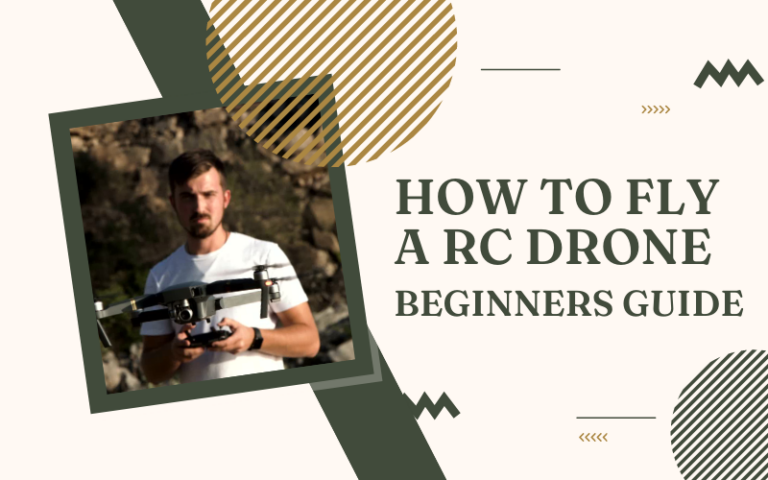It is Christmas morning, and your child is super excited as they unwrap their first drone. And they turn to you with a huge smile and say ‘Thank you so much! I can’t wait for you to teach me how to fly it’. Your heart sinks a little bit, because you have no idea how this thing works… But don’t worry, our handy beginners guide to RC drones is here to help you out and get your little pilot started on their new favorite hobby.
Beginner Drone Safety Tips
- Stand 30 Feet away – Keep a nice safe distance away from the drone just in case it doesn’t come down. No one wants one of these things landing on their head.
- 10-Foot Minimum Altitude – For beginner drone pilots, don’t go up higher than about 10 feet. This is going to mean that if an error happens, you’ll have time to correct it but its not going to be the end of the world if you don’t. Also, if it does come down, it won’t have drifted of too far.
- Be Aware of Radio Interference – Depending on the radio system that your drone uses, you might find some interference in some places. If it is acting strangely, it might be radio interference, so try taking it somewhere else. Avoid areas that have power lines and radio towers close by.
- Wind – Once you are an expert pilot, you’ll be able to deal with the wind, but its going to be too difficult to learn how to fly on windy days. Take it out for the first flights on calm days.
- Prop Guards – Getting a set of propeller guards is a great investment for beginners, as it’l minimize the damage to your propellers if you crash. You can always take them off once you’ve got the hang of things.
- Avoid drone restricted areas – Make sure if you go outside you are flying in an area that you are allowed to use drones in. Contact your local authorities if you are in any doubt.
Learning the Drone Controls
While each drone is likely to have its own unique set up, we’ll go over the basics of drone controls for you here. Just be sure to also check the instructions that came with your drone too.
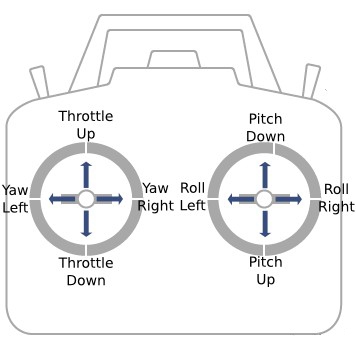
While the controls of a drone might seem overwhelming to our kid at first, 90% of the things a drone can do are controlled by the two control sticks shown above. So its a good idea to start here
Left stick
This is the throttle and ‘yaw’ stick.
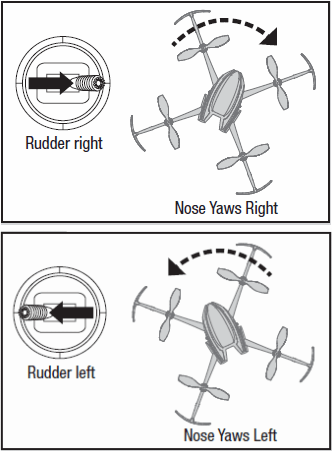
Yaw By moving it left or right (the Yaw), you can turn the drone in that directions. It turns as it hovers, so it basically spins on the spot Be warned though, it works counter clockwise, so turning the stick to the right will turn the drone left (don’t worry, you’ll get used to it. )
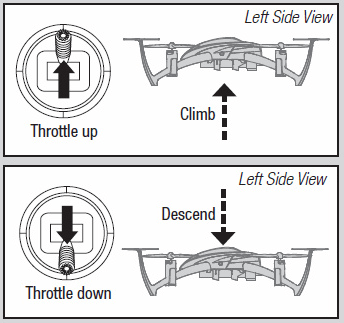
Throttle Moving the left stick up and down controls the throttle, and basically it makes the drone go up or down. leaning heavy on the throttle will make it go up very fast, while you need to have a little bit of throttle on at all times to keep it airborne. Learning to control the throttle is going to be one of the most fundamental skills a new pilot needs to learn.
Right Stick
The right stick controls the roll and pitch
Roll Moving the right stick to the right or left will control the roll. Rolling of the quad is basically tilting or leaning to one side or the other. This doesn’t change the altitude of the drone, but helps it to veer over to one side without turning it.

Pitch By moving the right stick up or down, you control the pitch of the drone. This means the nose points either up or down, which makes it go forwards or backwards. You can think of it like an accelerator and a reverse. Simply push up to go forwards and back to go backwards

Your First Flight
Now that you’ve got to grips with the controls, its time to take the drone out for its first voyage. Remember, be very gentle on the controls, and don’t use any jerks or hard movements. We don’t want it to crash.
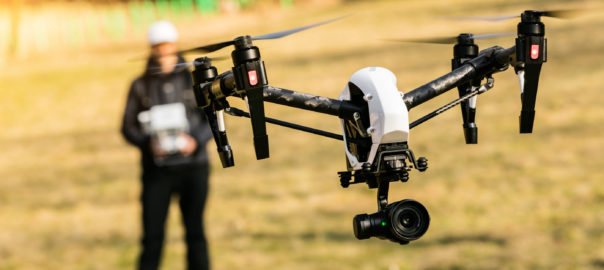
1 Take off – Sit the drone on a flat piece of ground, and use the throttle very gently to begin take off.
2 Hover – Use the throttle to keep the drone hovering a few feet above the ground. Try to keep it steady.
3 Turn the Drone – Once you can hold it in a steady hover, practice using the yaw to turn it to the left and right. See if you can make it spin 360 degrees.
4 Fly – use the pitch very gently to start going backwards and forwards. See if you can take it forward in a straight line, and then turn it round and come back. If you feel really adventurous, you could try to ly i in a wide circle too.
5 Land – Bring the drone back to that nice bit of flat ground you took off from, and hover it steadily. Very gently and gradually push the throttle down, and slowly the drone will come back down to land. Be very careful and gentle here, as if you hammer the throttle down, you send the drone crashing into the ground and maybe even break it.
We hope these tips were helpful to you, and wish you and your kids all the best on your drone flights. Remember, be safe and take it easy; you will get the hang of it in no time.

